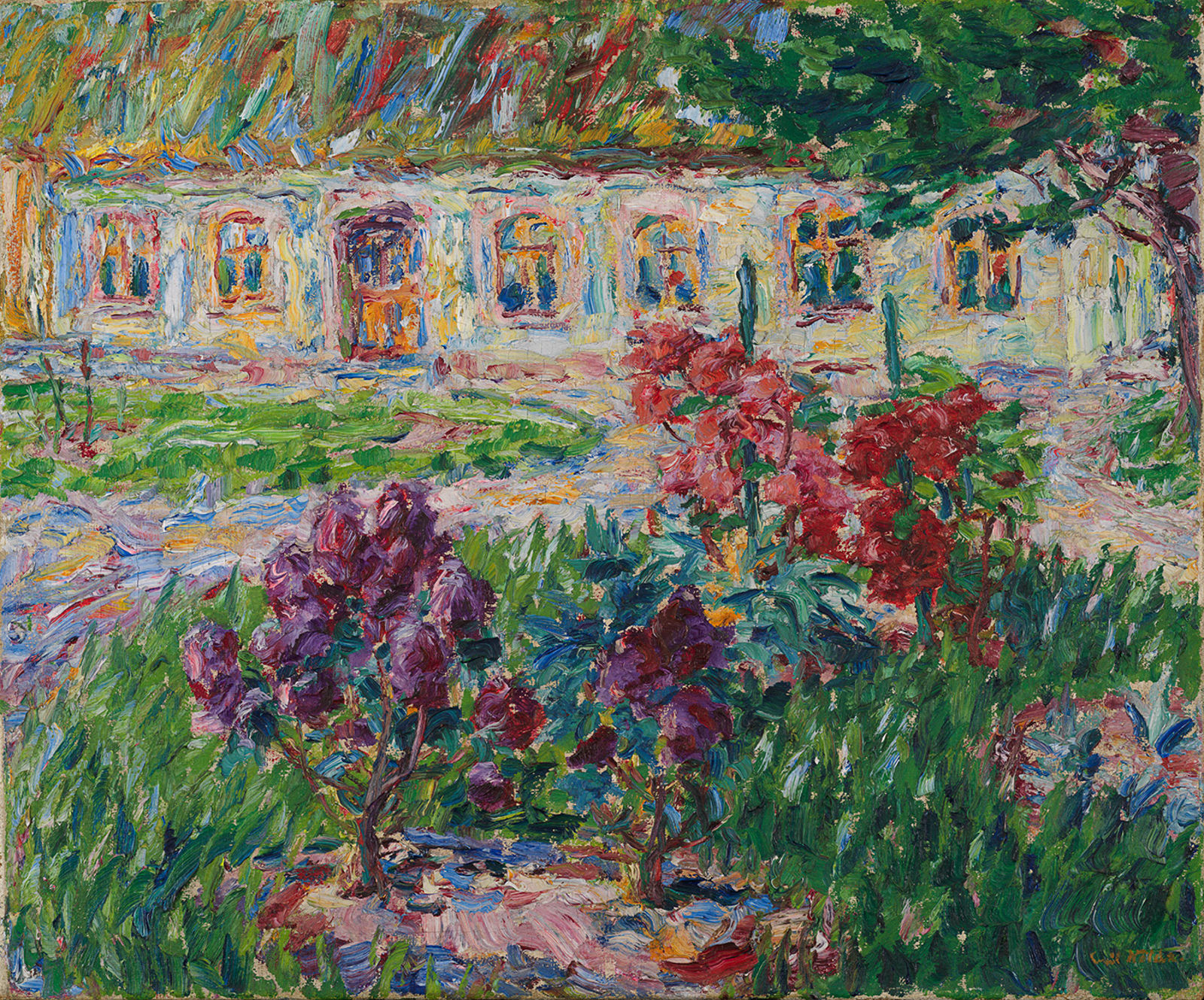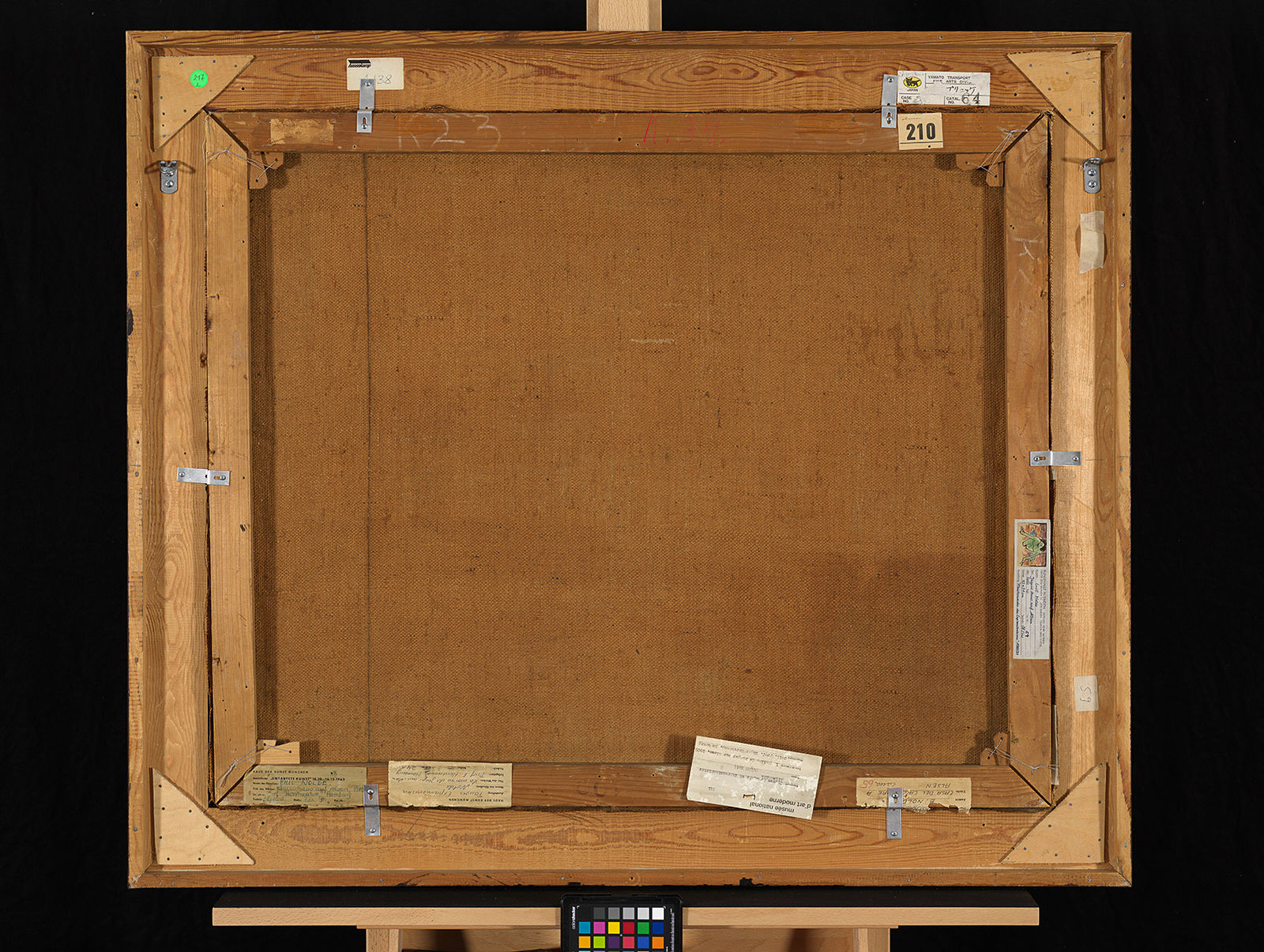

Emil Nolde
Jägers Haus auf Alsen
Rahmenmaß 90,5 × 106,5 × 4,3 cm
Provenienz
Das Gemälde hatte seit 1919 zur Sammlung der Hamburger Kunsthalle gehört, bevor es im Juli 1937 im Rahmen der nationalsozialistischen Aktion Entartete Kunst beschlagnahmt worden ist. 1940 wurden die Kunsthändler Hildebrand Gurlitt (1895–1956) und Bernhard A. Böhmer (1892–1945) vom Deutschen Reich mit der Veräußerung des Werks beauftragt. Welchen Weg das Gemälde bis 1946 nahm, ist uns bislang nicht bekannt. Ab diesem Jahr ist es in der Sammlung von Edgar (1902–1994) und Greta Horstmann (Hamburg/München) nachweisbar. Ihr Sohn, der Kunsthändler Rainer Horstmann (Hamburg), verkaufte dem Brücke-Museum das Gemälde 1979.
Exhibitions (selection)
- 1905: Fritz Bleyl und der Beginn der Brücke , 2023, Brücke-Museum, Berlin
1910: Brücke. Kunst und Leben, 2022, Brücke-Museum, Berlin
Flucht in die Bilder? Die Künstler der Brücke im Nationalsozialismus, 2019, Brücke-Museum, Berlin
Die Brücke 1905–1914, 2018/19, Museum Frieder Burda, Baden-Baden
Literature (selection)
- Kestner-Gesellschaft Hannover (Hg.), Emil Nolde, Ausst.-Kat. Kestner-Gesellschaft Hannover, 1948.
Leopold Reidemeister, Das Brücke-Museum, Berlin 1984.
Magdalena M. Moeller, Das Brücke-Museum Berlin, Prestel, München 1996.
Magdalena M. Moeller (Hg.), Brücke. La nascita dell´espressionismo, Ausst.-Kat. Fondazione Antonio Mazzotta Milan, Mazzotta, Milano 1999.
Magdalena M. Moeller (Hg.), Die Brücke. Meisterwerke aus dem Brücke-Museum Berlin, Ausst.-Kat. Brücke-Museum Berlin, Hirmer Verlag, München 2000.
Brücke und Berlin. 100 Jahre Expressionismus, Ausst.-Kat. Neue Nationalgalerie, Kulturforum Potsdamer Platz, Nicolai, Berlin 2005.
Magdalena M. Moeller (Hg.), Brücke-Museum Berlin, Malerei und Plastik. Kommentiertes Verzeichnis der Bestände, Hirmer Verlag, München 2006.
Magdalena M. Moeller (Hg.), Erich Heckel. Der große Expressionist. Werke aus dem Brücke-Museum Berlin, Ausst.-Kat. Stadthalle und Zehntscheuer Balingen, Hirmer Verlag, München 2013.
Magdalena M. Moeller, Nolde. Der Maler, Hirmer Verlag, München 2016.
Magdalena M. Moeller (Hg.), Brücke Museum Highlights, Hirmer Verlag, München 2017.
Details
Tags
Bildgattung: Landschaft
GND
Geografika: Alsen (Insel), Ostsee
Iconclass
Blumen
Profanarchitektur; Gebäude; Wohnräume
Landstraße, Weg, Pfad
Bäume
Pflanzen, Vegetation
Architektur
Fassade (eines Hauses oder Gebäudes)
Inscription/Signature
Signiert unten rechts:
Emil Nolde (Signatur)
Nicht bezeichnet (Bezeichnung)
Inventory Number
4/79
Catalog Number
Urban 292

